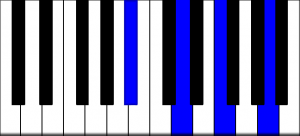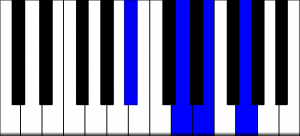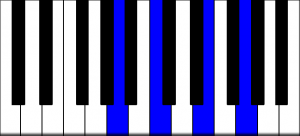There are many possible variations of the basic 2-5-1 chord progression using seventh chords. A common one is to play rootless ninth chords for the ii minor seventh and I major seventh chord, and a thirteenth chord for the V dominant seventh chord.

This is how you create these chords from the seventh chords of the basic 2-5-1 in the key of F:
- For G minor 9 you just add the ninth A on top of the G minor 7 chord, while removing the root G from the bottom. Remember that the ninth is the same as the second, so it is just on whole step up from the root.
- Then you only have to move the F down one half step to arrive at C13. The thirteenth is the same note as the sixth, so for the C chord it is the A on top.
- For F major 9, just as with G minor nine, you add the ninth G on top of the F major 7 chord and remove the root F from the bottom.
While this may sound complicated, it is a rather simple movement on the keyboard:

G minor 9 (rootless)

C 13 (rootless)

F major 9 (rootless)
This progression is very popular among jazz pianists. Just as with the more basic 2-5-1, it is good if you know it in all twelve keys. This way you can use it to play a great part of the jazz standards, because 2-5-1s appear so often in these compositions.
In a trio the bass player will play the roots of the chords, which frees the piano player to use different voicings such as the above ones. The rootless chord voicings are also great to comp chords while soloing.

